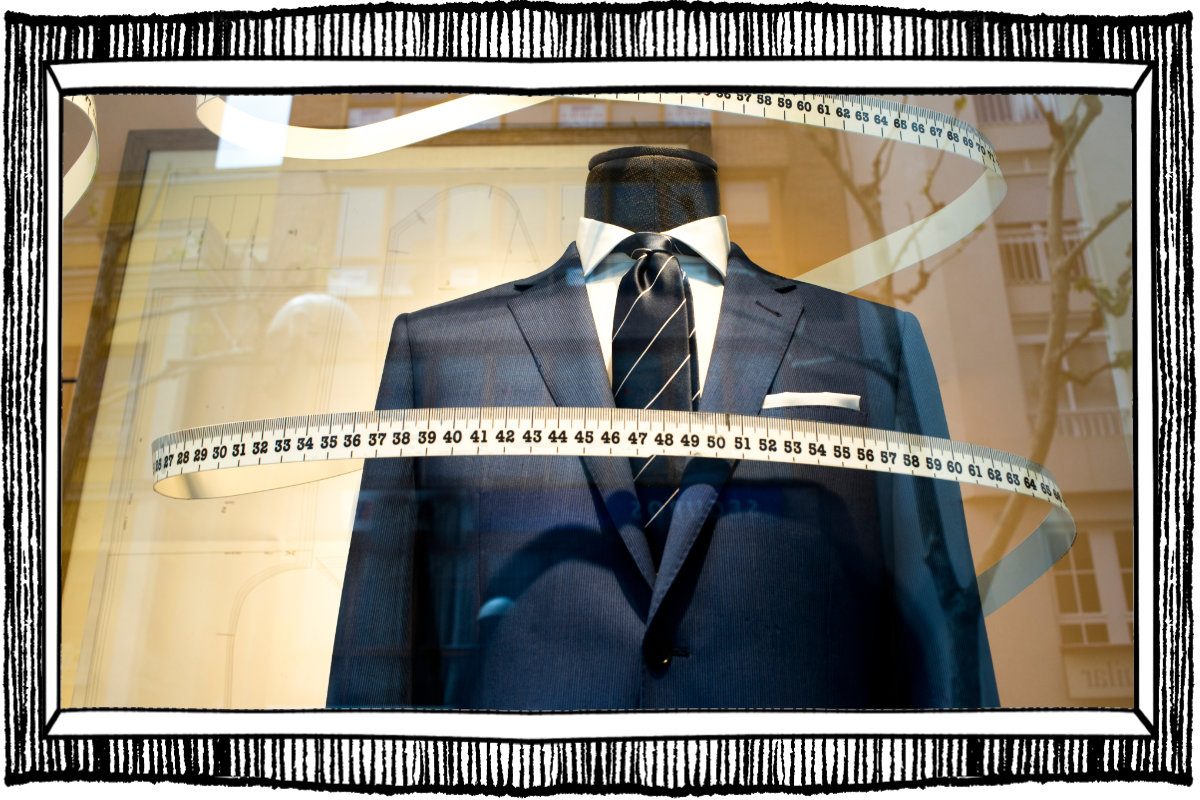Sartorialism conveys a vision: that of the longevity of the wardrobe, never out of fashion, timeless, defying fads thanks to definitively classic lines. Then there’s the choice between artisan tailors with hand-made garments, made-to-measure or mass-produced ones. Everything except RTW (which we’ll use here to mean ready-to-wear). Find out everything you need to know to find the best made-to-measure tailor in Paris to suit your style, not unlike finding a grand cru to suit your tastes.
A style glossary for aspiring sartorialists
Sartorialism is a current movement, the name of which comes from the Latin for tailor, and which is particularly concerned with classic menswear. This movement includes women by offering similar but feminised clothing, thus reviving the garçonne style. Its influences are English, Italian and French.
Preppy style
This is the style of elite American prep schools, also known as the Ivy style. The well-heeled style of Ivy League students: Harvard, Yale, etc. Women go in for it just as much as men: a chunky knit jumper over a shirt worn with pleated trousers, or a little pencil skirt with a traditional cardigan.
It’s a style that combines a classic piece like a jacket with a relaxed casual look.
Dandy style
Dandyism originated in London, the capital of conformist, staid elegance, emerging in the late 18th and early 19th century. Stiff outfits were destructured with the infamous British stiff upper lip, bordering on decadence… For the time.
The dandy crossed the Channel, and these days is to be found mixed with hipster style which has reverted to its mainstays. A bit edgy and offbeat, but sartorial. He can wear a three-piece suit with a bad boy touch: look at Peaky Blinders, for example.
Gentry style
A tribute to the gentry style of Elizabeth II. This is very traditional bourgeois or even landed gentry style. Tweed, mohair wool and cashmere. All wrapped in tartan or Prince of Wales fabric. Accessories are an important feature: leather gloves, Hermès scarves.
Sprezzatura style
This term originated in Italy, which is a country that turns out world-renowned tailors. Sprezzatura is the art of feigning: feigning looks that you might think are haphazard, whereas in fact they are perfectly stage-managed. It’s fake nonchalance: wrinkled linen, a badly tied tie or an upturned shirt collar.
Who can I go to get a suit tailored in Paris?
Before anything else, you need to come up with a plan so that you know who to go to. Will you be picking out a particular fabric? A cut? A full suit, just a jacket or trousers? Do you have time to devote to this undertaking?
Check out made-to-measure tailors in Paris, too.
Made-to-measure, small measure, semi-bespoke or bespoke?
It’s time you understood what’sinvolved in making a suit to your measurements.
What is bespoke clothing production?
Let’s start with the ultimate in clothing: handmade in a master tailor’s establishment. Bespoke work is a long process, and if you order a suit, it can take from several weeks to several months before you get to put it on for the first time, depending on the reputation of the workshop. You will have to go to several fittings in person.
Here’s how it works: you pick the fabric from the selection offered, as well as the fabric for the lining, and have your measurements taken. You will be given a sketch, which will include the custom elements (buttons, embroidery, special requests, etc.).
The tailor will try to read your posture and mannerisms, to pin down your personality and nudge you towards a design that’s right for your body type.
Then he will make a pattern, which he will draw right on the fabric, and a tacked baste. No less than three fittings will be needed to adjust the various elements of your suit.
Where can you find an establishment with its own workshop and boutique in Paris? Cifonelli of Italy, rue Marbeuf.
What is small-measure (also known as made-to-measure) clothing production?
In small-measure clothing production, there is no industrial process. The work is done on the basis of an existing pattern, so working from a template. As it is in semi-bespoke clothing production, only the pieces are made entirely by hand by an artisan tailor. By hand or on a machine, but not in a standardised way.
The notable difference is that you can customise the entire garment, all the alterations. the thread used, the stitch used, the interlining and, of course, the fabric used.
The taking of measurements is crucial. If a brand doesn’t check around 60 points, its clothing production is not made-to-measure.
Where can you find such an establishment in Paris, to have a business suit made for you, one for a business dinner in Paris or your wedding suit? At Faubourg Saint Sulpice in the highly sought after 7th arrondissement.
What is semi-bespoke clothing production?
Semi-bespoke work involves the creation of a pattern to the customer’s measurements based on an existing model (template).
The sales advisor will take measurements, but no more than around ten points, making the garment a little more standardised than bespoke or small measure. By using an existing design, you do cut down the turnaround time. But you can’t get around the need for fittings, which allow you to fine-tune the smallest detail and apply finishing touches, like with a bespoke suit.
The main difference is in the manufacturing process: the garment is sent to a workshop where it is made using mass production methods.
This information must be disclosed to you, because this is a form of subcontracting and you must have access to a collection or a piece produced by the subcontractor in order to check the quality of the assembly.
Where to go in Paris for a semi-bespoke line: Blandin & Delloye. They will also take care of the accessories for your wedding outfit. Or Lanieri of Italy (headed up by Ricardo Schiavotto and Simone Maggi).
Our pieces of advice to check that the Paris establishment you’ve found is top quality
What makes a brand serve as a benchmark in the world of master tailors?
- Its manufacturing process: if it uses mass production methods, check where the workshop is located. It is better if it is located in Europe. This is in no way a guarantee as to the quality of the finish, so you need to see the range of products and services offered by the establishment for yourself.
- The choice of fabrics offered: the major brands that supply the best workshops are: Loro Piana, Holland & Sherry, Dormeuil, Vitale Barberis, etc. If you don’t see any of these names in the boutique, move on.
- The taking of measures: tailoring calls for a large number of measuring points. The fewer there are, the more standard your suit will be. So if you have a small budget, don’t expect a lengthy appointment. Some brands have you take your own measurements, which you feed into a software programme. These details speak volumes when it comes to value for money.
When it comes to tailoring, France (Paris), Italy (Naples), England (London) and Japan (Tokyo) are where it’s at. These cities are the beating heart of the sartorial arts.

